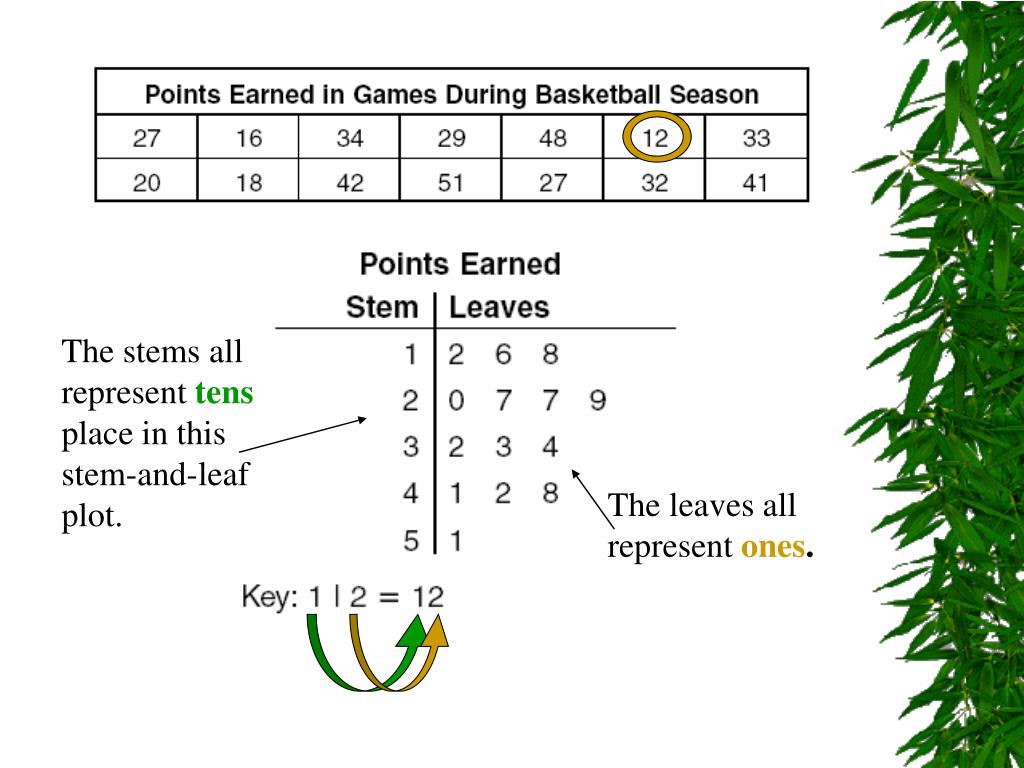

The stem and leaf plot is drawn in a table with two columns. Home | About | Privacy | Reprints | Terms of UseĬopyright © 2002-2010 . The stem and leaf plot is used when your data is not too large (about 15-150 data points). The stem and leaf plot offers information similar to that conveyed by a histogram, and easily can be constructed without a computer. The data is arranged compactly since the stem is not repeated in multiple data points. The values of each individual data point can be recovered from the plot.

The plot can be constructed quickly using pencil and paper. The stem and leaf plot essentially provides the same information as a histogram, with the following added benefits: A stem and leaf plot is a chart that helps sort a set of multi-digit numbers. If a larger number of bins is desired, the stem may be 2 digits for larger numbers, or there may be two stems for each first digit - one for 2nd digits of 0 to 4 and the other for 2nd digits of 5 to 9. In this method, the value is split into a stem and a leaf. A stem-and-leaf plot displays data by splitting up each value in a dataset into a stem and a leaf. Alternatively, some people consider the rows to be stems and their digits to be leaves. Stem and Leaf Plots is a method to represent a set of values in a tabular or graphical format.

The term "stem and leaf" is used to describe the diagram since it resembles the right half of a leaf, with the stem at the left and the outline of the edge of the leaf on the right. The result is a histogram turned on its side, constructed from the digits of the data.


 0 kommentar(er)
0 kommentar(er)
